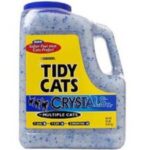What is Silica Gel? These packets contain a desiccant called Silica Gel, which absorbs moisture that could be harmful to things like electronics, leather goods, and dried food. Silica Gel is not a slick or wet substance as the name would suggest, rather it is a dry solid. Inside the white packets are beads of this dry solid material that remain dry to the touch even when fully saturated. The packet material allows moisture to pass through to the beads of Silica Gel. The Silica Gel, made from sodium silicate, is a highly porous substance that can absorb up to 40% of its own weight. Silica Gel is non-toxic and is safe to be packaged with food products. The packets are labeled “Do Not Eat” because Silica Gel is not food, not because it is harmful.
Indicating Silica Gel:
Two types of Silica Gel can be purchased, clear Silica Gel and Indicating Silica Gel. Indicating Silica Gel is beads of clear Silica Gel that have been impregnated with a chemical that changes color when it comes into contact with moisture. When the color has changed, it means that the Silica Gel is fully saturated and needs to be replaced or reactivated. This can be useful when long term humidity control is needed, like in a display case.
Many Indicating Silica Gels start out blue and change to pink as they become saturated. This type of Indicating Silica Gel has been impregnated with cobalt chloride, which is blue when it is dry and turns to purple then pink as it becomes saturated. There have been some significant health and environmental risks attributed to the use of cobalt chloride including skin and respiratory irritation. A safer alternative is Indicating Silica Gel that goes from orange to green, which does not contain cobalt chloride. This safer alternative is offered by responsible companies who are looking out for the health and well-being of their employees and customers, as well as the environment.
Silica Gel Packaging:
Silica Gel doesn’t come in just the small white packets. There are many different ways that Silica Gel can be packaged. Silica Gel packaging can range in size from ½ a gram, like you might see in a bag of beef jerky, to 900 grams, which can protect an area up to 66 cubic feet. Smaller amounts of Silica Gel are usually packaged in packets made from cotton, paper or Tyvek. These materials allow moisture to pass through to and be absorbed by the SIlica Gel. Tyvek is a very durable material and can maintain packet integrity from rough handling or product breakthrough. Indicating Silica Gel typically comes in a plastic packet or a container with a window so that the color changing beads can be seen. Some uses of Silica Gel, like drying flowers, call for loose beads, it is possible to buy a re-sealable bag of loose beads. Bags of looses beads are usually plastic to maintain the dry state of the Silica Gel beads so they are ready to be used.
Examples of Silica Gel’s Uses:
Silica Gel purpose is to absorb moisture, thereby removing the moisture from the immediate environment. This moisture absorbing property can be used in many ways. Many manufacturers include Silica Gel packets in their electronics packaging. Including the Silica Gel packets helps protect the electronics from any moisture that may have already been in the box or get in during transportation. This moisture has the potential of damaging the electronics. Another electronics related use is to draw out the moisture from and electronic device that has gotten wet. Many people end up having to replace items like cell phones or MP3 players because they have gotten wet. Placing the electronic device in an airtight container with some Silica Gel packets will remove all the moisture from the device more effectively than air drying and more safely than applying heat.
Leather goods are often transported with Silica Gels to help protect them from moisture damage. A few Silica Gel packets help to make sure that the products reach their destination in the same condition as they were in when they left the manufacturer. Silica Gel packets are often found with new shoes, new purses, and new leather jackets. Storing leather goods with Silica Gel packets can also help protect them from moisture and make them last much longer. For example, a leather coat that will not be worn all summer, when the humidity tends to be higher, can be protected from the humid air by being put in a box with Silica Gel packets.
People who participate in water sports like boating, scuba diving, or fishing are often faced with the problem of protecting things that shouldn’t get wet. One of the solutions to keeping things like cell phones, MP3 players, and electronic key fobs dry is to put them in dry bags or dry boxes. These bags and boxes are specially designed to be water tight. Of course small amounts of moisture may get in when items are being put in or taken out. Adding Silica Gel packets to the dry bag or dry box adds another level of protection for the items inside by absorbing any moisture that may have gotten in.
Cameras can pose a very special problem when it comes to water sports. When people bring a camera along, it usually means they want to take pictures of the event. Keeping the camera in a dry box makes it difficult to use, but taking it out to use exposes it to the danger of getting wet. There are many waterproof cases available for many different types of cameras. Adding a Silica Gel packet to the case can help absorb any moisture that may have gotten in when the camera was being put in the case. For scuba divers, the changes in pressure and temperature as they descend can cause any moisture present in the waterproof case to condense – the Silica Gel packets prevents this condensation from collecting on the camera. The increasing pressure may also cause small leaks in the case. The Silica Gel packets will absorb the moisture that gets in from a small leak. They will not help, however, if the case becomes completely flooded.
Vitamins and pills are often packaged with Silica Gel packets. Any moisture that ends up in the bottle could damage the coating or speed up the decomposition of the vitamins or pills. The packets of Silica Gel absorb the potentially harmful moisture and help preserve the vitamins or pills. Keeping the Silica Gel packets in the bottles after opening can help absorb any moisture that gets in through regular opening of the bottle. Silica Gel packets are also used to help keep dried food, like beef jerky and pepperoni, fresh. The Silica Gel packets included with dried foods prevents the growth of mold by absorbing the moisture in the packaging.
How Much Should be Used?
The amount of Silica Gel to use depends on several factors including container size and type, volume of contents, and the conditions under which it will be used. Conducting a stability study is the best way to determine how much Silica Gel should be used. Stability studies use the moisture in the container, how much moisture can permeate the container, and the physical properties of the contents.
Minimum Requirements:
Container SizePacket Size
70 cubic inches½ gram
100 cubic inches¾ gram
130 cubic inches1 gram
0.225 cubic feet (389 CU IN)3 grams
0.375 cubic feet (648 CU IN)5 grams
0.75 cubic feet (1296 CU IN)10 grams
2 cubic feet28 grams
4 cubic feet56 grams
8 cubic feet112 grams
15 cubic feet200 grams
33 cubic feet450 grams
66 cubic feet900 grams
Fully Saturated Silica Gel:
When Silica Gel becomes fully saturated it can no longer protect the contents of the container from moisture. As long as the Silica Gel has not come in contact with any toxic substances and is not in a plastic packet, the Silica Gel can be reactivated. Silica Gel can be reactivated by heating it in an oven at 235° for 3 hours. Silica Gel in plastic packets cannot be reactivated as the plastic will melt if subjected to heat in this manner. Tyvek can melt if the Silica Gel packets are heated to the point of being hot, so care must be taken when using residential ovens as their temperature readings are not always accurate. Cotton can break down over time after repeated reactivations, so the integrity of the packet should be checked after each use. Indicating Silica Gel can also be reactivated, the indicating beads will turn back to their original color when fully desaturated.
Silica Gel that is not being reactivated, Silica Gel in plastic packets for instance, can be thrown away in the trash with no special precautions unless it has come in contact with a hazardous material. Due to the absorbent properties of Silica Gel, if it comes into contact with a hazardous material, the Silica Gel will become toxic. If this does happen, the Silica Gel should be disposed of in the manner indicated for the hazardous material that contaminated it.






